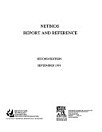Bridge Technology Report
Architecture Technology Architecture Technology Corpor
ต.ค. 2013 · Elsevier
eBook
176
หน้า
family_home
มีสิทธิ์
info
reportคะแนนและรีวิวไม่ได้รับการตรวจสอบยืนยัน ดูข้อมูลเพิ่มเติม
เกี่ยวกับ eBook เล่มนี้
Please note this is a Short Discount publication. As LANs have proliferated, new technologies and system concepts have come to the fore. One of the key issues is how to interconnect networks. One means of interconnection is to use a 'bridge'. Other competing technologies are repeaters, routers, and gateways. Bridges permit traffic isolation, connect network segments together and operate at the MAC layer. Further, because they operate at the MAC layer, they can handle a variety of protocols such as TCP/IP, SNA, and X.25. This report focuses on the specific technology of bridging two networks and the competing approaches of spanning tree [backed by DEC] and the source route technology [backed by IBM]. Both of these approaches are compared and their strengths and weaknesses described and contrasted. Other approaches that combine the two approaches as well as novel approaches to this problem are described. In a world of increasing complexity of networks, it is imperative that the user understand the possible means of bridging two networks and the capabilities of the various vendors products. The report focuses itself on developing that critical understanding.
ให้คะแนน eBook นี้
แสดงความเห็นของคุณให้เรารับรู้
ข้อมูลในการอ่าน
สมาร์ทโฟนและแท็บเล็ต
ติดตั้งแอป Google Play Books สำหรับ Android และ iPad/iPhone แอปจะซิงค์โดยอัตโนมัติกับบัญชีของคุณ และช่วยให้คุณอ่านแบบออนไลน์หรือออฟไลน์ได้ทุกที่
แล็ปท็อปและคอมพิวเตอร์
คุณฟังหนังสือเสียงที่ซื้อจาก Google Play โดยใช้เว็บเบราว์เซอร์ในคอมพิวเตอร์ได้
eReader และอุปกรณ์อื่นๆ
หากต้องการอ่านบนอุปกรณ์ e-ink เช่น Kobo eReader คุณจะต้องดาวน์โหลดและโอนไฟล์ไปยังอุปกรณ์ของคุณ โปรดทำตามวิธีการอย่างละเอียดในศูนย์ช่วยเหลือเพื่อโอนไฟล์ไปยัง eReader ที่รองรับ







